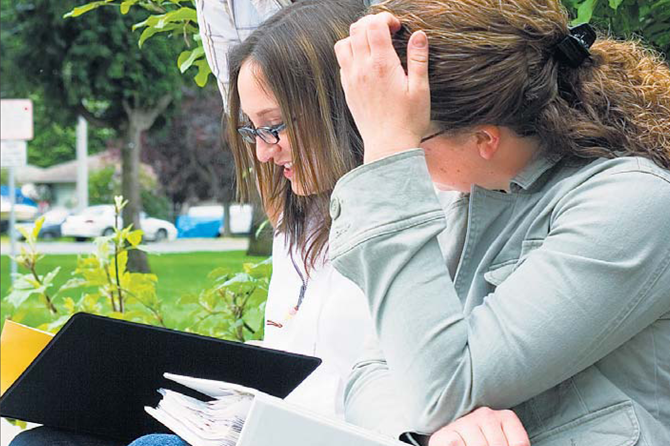How do I solve this complex problem in calculus? How do I handle this difficult case study? How to study in the most effective manner? These are normal questions which could arise as you find your way through a maze of subjects.
There are different learning, memorising and problem-solving techniques. You choose different methods depending on the subject, effectiveness of the method, and the ease of application. Several students doing undergraduate courses gave their opinion as below:
“My first reading is in detail to understand. Subsequently, I only scan the headings, recollecting the explanation” – Geethanjali.
“We have a group for taking down notes. While one member takes down notes, others remain attentive to the lecture” – Venkatesh.
“For easier subjects, I prefer studying alone. However, for subjects like algebra and calculus, we study in groups” – Arun.
“In BBM, we have to solve case studies, which are invariably done in groups” – Thomas.
“During the first two years, I studied alone; however, this being the final year, some of us have got together for difficult subjects” – Priya.
A learning method which is increasingly popular and also has wide ranging business applications is studying in groups.
The power of creative thinking
Philosophers and thinkers have always propagated the virtues of lateral or creative thinking. Edward de Bono, author and consultant, developed several formal techniques for creative thinking. He is widely regarded as the leading authority in teaching concepts related to ‘thinking’.
He explains, “In creative thinking, each member can focus on different aspects, and the group then considers the pros and cons, and arrives at faster solutions.”
This technique can be adopted by students doing a common course by getting together to study subjects like mathematics, solve complex problems, and handle projects, case studies and classroom assignments.
Advantages of study groups
Studying for a course can often get boring, leading to distraction. The key advantage, therefore, is stimulating each other, which leads to focus and commitment.
You are often reluctant to ask clarifications in the classroom, which leads to knowledge gaps and confusion, whereas one is comfortable to seek those clarifications in a study group.
The learning process in a group evolves with information sharing, active listening and discussion. As you explain concepts to group members, your presentation skill develops.
A study group creates a platform to share new ideas, concepts and learning techniques, broadening your horizon.
There are other consequential benefits such as comparing and sharing class notes, books and other reading materials.
Choosing the group
Once you decide the task for the group, choosing members of the study group is critical for success. In general, members should be of the same course, preferably from the same college, and committed to the group method of learning. They should be good listeners, willing to share ideas and resources with a positive attitude. The number of members should be such as to facilitate learning, without creating the new task of group management. Ideal group size could be around 4-6.
A group is only as h4 as its weakest link. Avoid casual, loud and over-dominating students who are potential distracters and detrimental to the process of group effectiveness.
Getting the most from groups
Objective
Your group should have a clear task or objective. For example, to solve case studies, or to handle a particular course.
Frequency
Create ownership for the group’s success by ensuring that members meet at definite frequency. For example, weekly once for a course like mathematics, and for case studies, as and when the need arises. Inculcate this as a habit, by meeting on the same day of the week and at the same time.
Leader
Nominate a member to act as a leader, to get the group together and moderate the study. Rotate the leadership responsibility.
Preparation
Ensure all members come prepared, so that no time is wasted.
Synergy is one of the major outcomes of ‘team work’. Studying together is succeeding together, by combining your strengths for a common cause. Remember, individuals play the game, but teams win championships.

